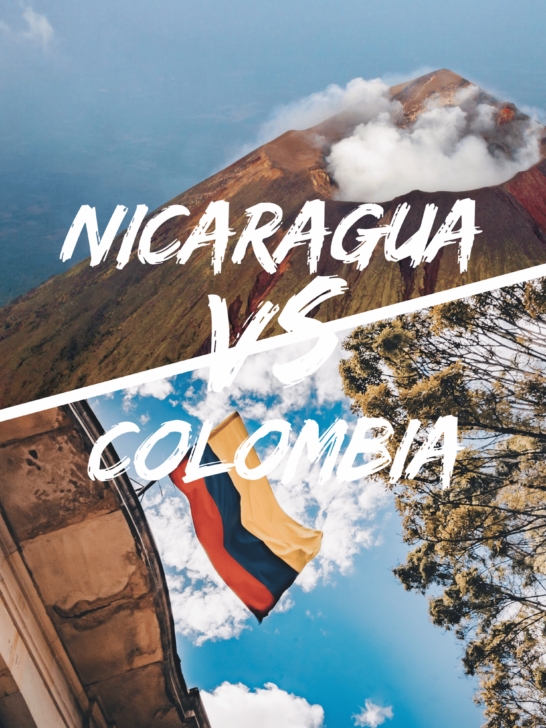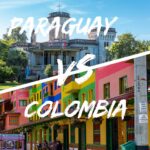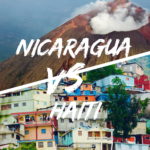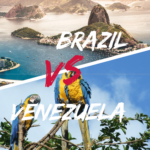Nicaragua vs Colombia: The ultimate Travel Comparison
Nicaragua vs Colombia: Two countres in Central and South America and known for their natural beauty, vibrant cultures and unique histories. Both countries have much to offer travelers interested in exploring the region, whether you’re looking to relax on a tropical beach, hike through lush rainforests or immerse yourself in local traditions and cuisine.
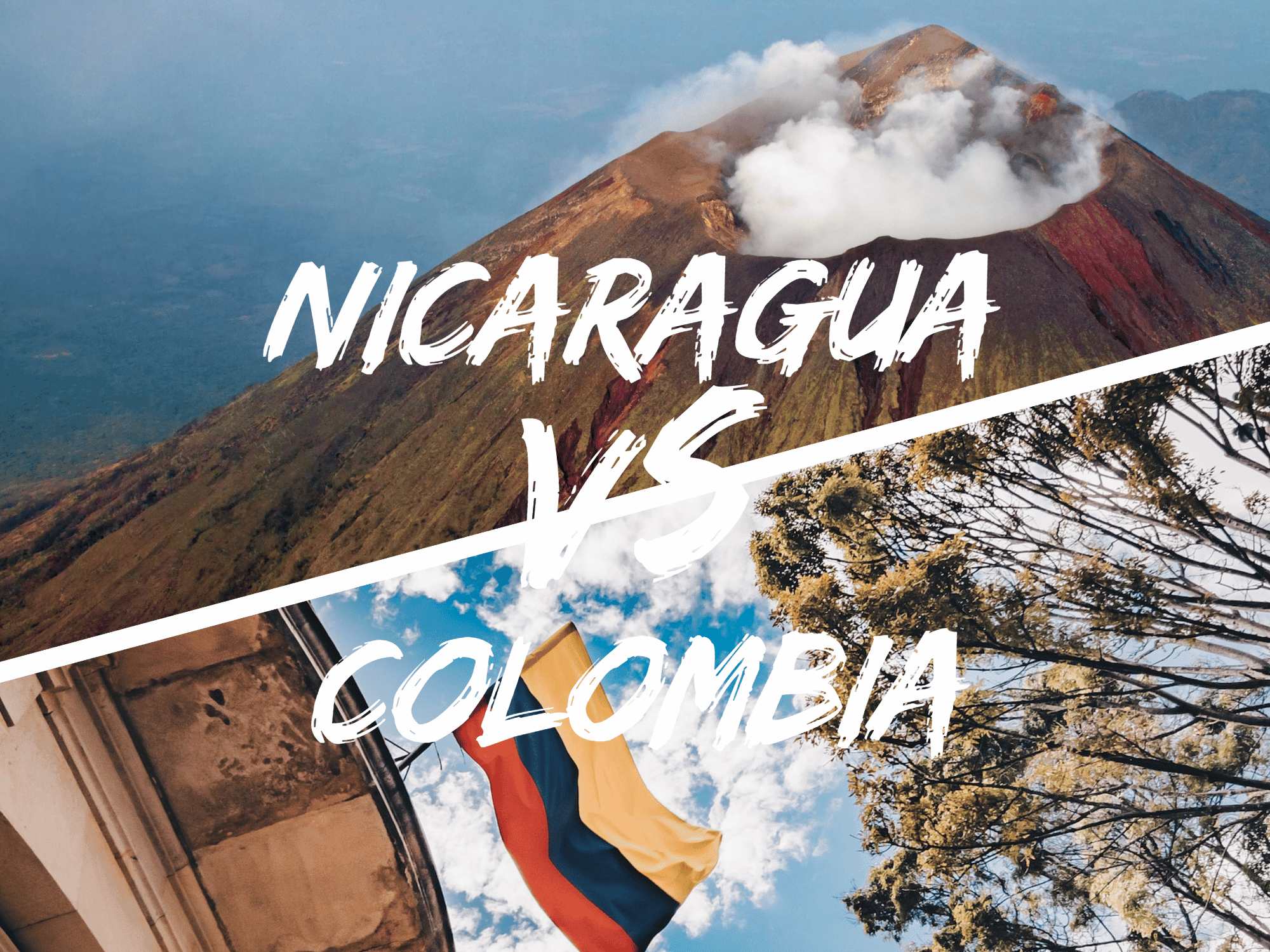
In recent years, Nicaragua and Colombia have become increasingly popular tourist destinations, thanks in part to their affordability, accessibility and wide range of attractions. While both countries have some similarities, they also have distinct differences in terms of geography, climate, culture and overall travel experience.
If you’re planning a trip to Central or South America and can’t decide between Nicaragua and Colombia, this comparison article will help you weigh up the pros and cons of each destination and choose the one that’s right for you. Whether you’re an experienced traveler or a first-time adventurer, there’s something for everyone in these two amazing countries.
Top Things to Do

Nicaragua and Colombia are two countries in Central and South America that offer travellers a variety of experiences. Although they share some similarities, they are also quite different.
What to Do in Nicaragua
If you are a beach lover, Nicaragua has some of the most stunning and often deserted Pacific beaches, such as El Coco, Marsella and Ocotal, where you can enjoy a variety of activities such as snorkeling, scuba diving, horseback riding and surfing. Colombia also has beautiful beaches, such as those in the Tayrona National Park and the Caribbean islands of San Andrés and Providencia.
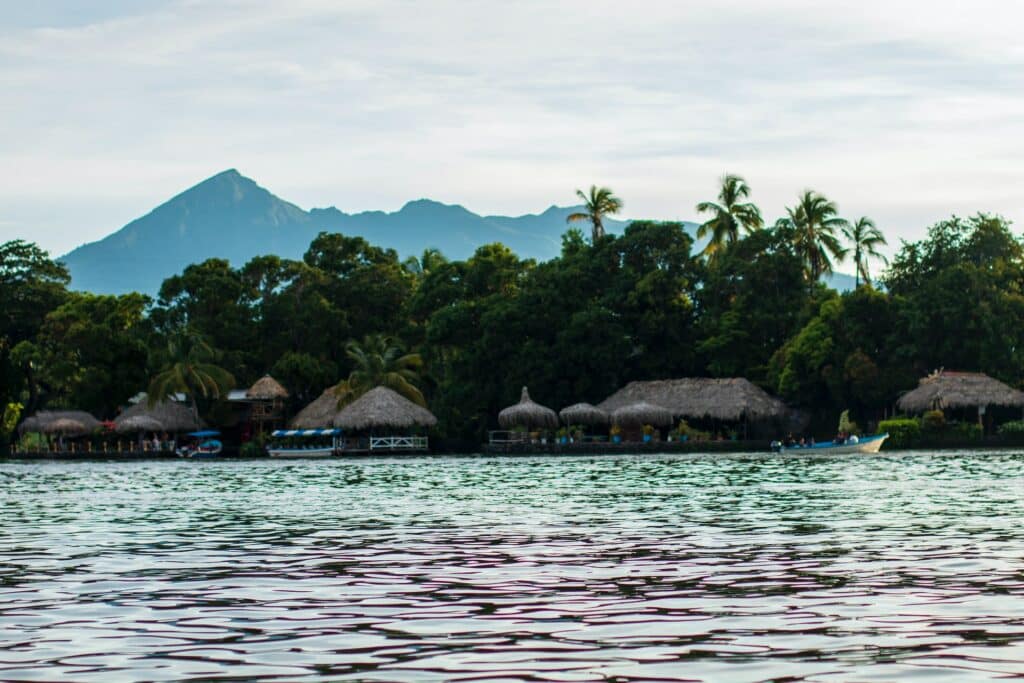
If you prefer the jungle, Nicaragua’s Indio Maíz Biological Reserve is home to an abundance of flora and fauna, and is also the perfect place for hiking and birdwatching. Similarly, Colombia’s Amazon region offers jungle tours, and the Sierra Nevada de Santa Marta mountains are home to the archaeological ruins of Ciudad Perdida.
In Nicaragua, visitors can explore the beaches, turtles, and party life of Rivas, take in the sights of Managua, the capital, and experience the culture of Masaya. For those looking for more adventurous activities, Nicaragua has plenty to offer. One can go snorkeling, diving, and horseback riding, as well as zip-lining over the Mombacho Volcano and paddling down the Rio San Juan.
Colombia Things to Do

Colombia is known for its vibrant culture and Medellín is a great place to experience it. You can also visit the colonial city of Zipaquirá to see the popular Salt Cathedral, or explore the art and folklore of Masaya. In Nicaragua, the city of Managua is an interesting mix of modern and traditional, and the Miraflor Nature Reserve gives you the chance to stay with a local family and learn about the region.
Colombia offers an equally varied selection of activities for tourists. One can climb Nevado del Ruiz, a snow-capped peak in Los Nevados National Park, cycle through car-free streets in Bogotá, explore the Salt Cathedral of Zipaquirá, drift through the Amazon, and discover the jungle and beaches of Tayrona National Park. Adventure seekers can partake in watersports such as diving and sailing in the Caribbean, as well as volcano boarding down Cerro Negro in León.
Summary – Nicaragua vs Colombia
Both Nicaragua and Colombia are rich in culture and history. In Nicaragua, visitors can witness the colorful murals of the revolutionary era in the capital Managua, as well as explore the folklore of Masaya and stay with a family in Esteli’s nature reserve. Colombia offers many of the same experiences, including cycling around car-free roads in Bogotá, visiting the Caribbean islands of San Andres and Providencia, and exploring the colonial town of Popayan.

If you’re looking for adventure, both countries have plenty to offer. In Nicaragua, you can climb the Cerro Negro volcano or take a boat trip down the Rio San Juan. Colombia also has its fair share of adrenaline-pumping activities, such as zip-lining over Mombacho volcano and cycling or skating along Bogotá’s car-free streets.
Whatever you’re looking for, Nicaragua and Colombia have something for everyone. Whether it’s a luxury beach holiday, jungle trek, cultural excursion or adventure-filled getaway, these two countries offer the perfect mix of experiences for the traveller.
| Category | Nicaragua | Colombia |
| Beaches | Offers stunning and often deserted Pacific beaches | Offers beautiful beaches, including Tayrona NP |
| Jungle | Indio Maíz Biological Reserve for hiking and birdwatching | Amazon region offers jungle tours, Sierra Nevada de Santa Marta has archaeological ruins |
| Culture | Colorful murals of the revolutionary era in Managua, folklore of Masaya, stay with local family in Miraflor NR | Vibrant culture in Medellín, colonial city of Zipaquirá to see the Salt Cathedral, explore the art and folklore of Masaya |
| Adventure | Climb Cerro Negro volcano, boat trip down the Rio San Juan | Climb Nevado del Ruiz in Los Nevados NP, zip-lining over Mombacho volcano, cycling or skating along Bogotá’s car-free streets, watersports in the Caribbean, volcano boarding down Cerro Negro in León |
Food and Drinks

Nicaraguan food is best known for Gallo Pinto, a dish of fried rice and beans served with tortillas and sour cream. Other traditional Nicaraguan dishes include Nacatamales, a corn dough filled with pork or chicken, rice and vegetables. Or Sopa de mondongo, a tripe and vegetable soup.
Furthmore rondón, a local stew made with whatever meat and vegetables are available. Nicaraguan drinks include liquados (a fruit juice mixed with water or milk) chicha (a fermented corn drink) and local beers such as Victoria and Toña.

Colombian food is also heavily influenced by Spanish cuisine and includes dishes such as arepas, a corn flour dough filled with either butter or cheese; changua, a warm salt soup; and calentado, a dish made from leftovers from the previous day. Popular Colombian drinks include coffee, hot chocolate served with melted cheese and beers such as Aguila, Club Colombia and Bogota Beer Company.
Comparison
Nicaragua and Colombia have a lot in common when it comes to food and drink. Both countries have a strong Spanish influence and traditional dishes in both countries often include rice and beans.
The two countries are known for their abundance of exotic fruits, which are often mixed into delicious drinks. In Nicaragua these include macuá, a white rum and fruit juice cocktail, and in Colombia aguardiente or ron, usually served in a hot alcoholic drink called canelazo. Traditional desserts are also popular in both countries, including Cajeta de Coco, a caramelised string of coconut and yucca, and Tres Leches Cake, a cake soaked in three types of milk.
When eating out, Nicaraguan meals are usually based on traditional Nicaraguan foods such as corn, beans, plantains, yucca and peppers. In Colombia, a typical meal might consist of tamales and arepas, a main course such as bandeja paisa or ajiaco, and a dessert of fresh fruit.

Overall Food and Drinks: Nicaragua vs Colombia
Overall, Nicaragua and Colombia have very similar food and drink cultures, with Spanish and indigenous influences and an abundance of exotic fruits and traditional dishes.
Tipping is customary in both countries, although in Nicaragua most restaurants will only ask for a 10-15% tip. The legal drinking age is 18 in both countries.
| Category | Nicaragua | Colombia |
| Cuisine | Strong Spanish influence, traditional dishes often include rice and beans. Popular dishes include Gallo Pinto, nacatamales, sopa de mondongo, and rondón. Drinks include liquados, chicha, and local beers such as Victoria and Toña. | Also heavily influenced by Spanish cuisine and includes dishes such as arepas, changua, and calentado. Popular drinks include coffee, hot chocolate with melted cheese, and beers such as Aguila, Club Colombia, and Bogota Beer Company. |
| Fruits and Desserts | Abundance of exotic fruits and traditional desserts, including Cajeta de Coco and Tres Leches Cake. | Macuá in Nicaragua and aguardiente or ron in Colombia, usually served in a hot alcoholic drink called canelazo. |
| Dining out | Based on traditional Nicaraguan foods such as corn, beans, plantains, yucca, and peppers. | Tamales and arepas, a main course such as bandeja paisa or ajiaco, and a dessert of fresh fruit. |
| Tipping | Customary, although in Nicaragua most restaurants will only ask for a 10-15% tip. | Customary |
| Drinking Age | 18 | 18 |
Beaches: Nicaragua vs Colombia

Nicaragua and Colombia offer some of the best beaches in Central and South America. Both countries are blessed with vast stretches of coastline, with Nicaragua boasting 570 miles of spectacular coastline on the Caribbean and Pacific coasts. Colombia offers a mix of pristine white sand, turquoise waters and charming restaurants and shops.

When it comes to Nicaragua, some of the must-see spots include Playa Maderas, Popoyo, El Tránsito, Playa Colorado and Playa Hermosa, all of which can be experienced in a week-long trip. Playa Maderas is the most popular beach in Nicaragua, with year-round surf, perfect for beginners and advanced surfers. Visitors to Nicaragua can explore a variety of beaches, from white to black sand, from secluded to lively.
El Tránsito offers a great local experience, while Playa La Flor is ideal for wildlife viewing. Other beach destinations in Nicaragua include Las Peñitas, Pearl Cays, Jiquilillo, Corn Islands and Miskito Cays.
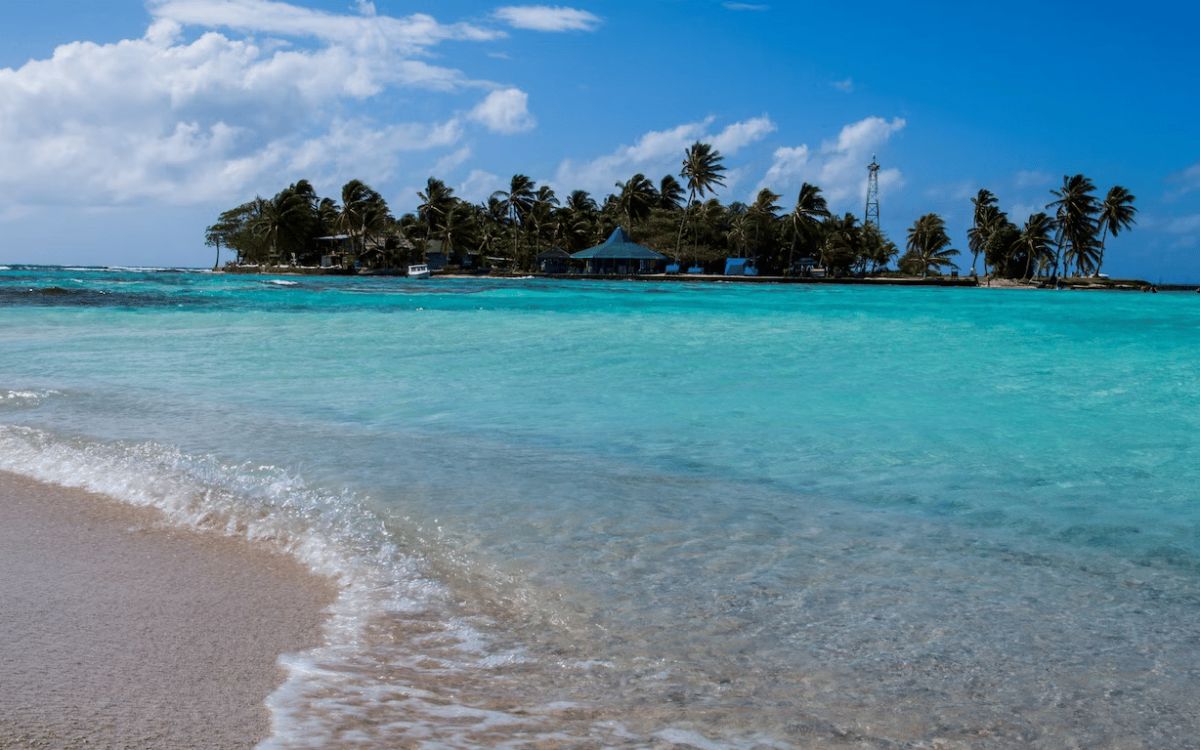
Colombia’s beaches are located on both the Caribbean and Pacific coasts and offer a wealth of holiday destinations. Some of the most popular beaches in Colombia include Baru, Cabo San Juan, Pilon de Azucar, Playas de Palomino, San Andres, La Guajira and Castillo Grande.
Baru is a 45-50 min boat ride from Cartagena and boasts pink and white sands and crystal clear waters. San Andres is 500 miles from the Caribbean coast and offers exceptional snorkelling and seven shades of blue. La Guajira is known for its sand dunes and incredible beaches, while Nuqui is a gem of largely unspoilt coastline.

Summary Beaches – Nicaragua vs Colombia
When it comes to comparing the beaches of Nicaragua and Colombia, it really depends on what you are looking for in a beach holiday. Nicaragua has an amazing variety of beach experiences and is known for it’s remote, wild and untamed beaches.

Colombia, on the other hand, offers a great mix of urban experiences mixed with pristine island beaches and crystal clear waters.
Both countries offer a wealth of beach destinations, making it difficult to say which is better. However, when it comes to beaches, Colombia has the edge in terms of variety, offering white sand beaches and a wealth of urban and tropical experiences.
| Category | Nicaragua | Colombia |
| Coastline length | 570 miles of coastline on Caribbean and Pacific coasts | Coastal beaches on both the Caribbean and Pacific coasts |
| Popular beaches | Playa Maderas, Popoyo, El Tránsito, Playa Colorado, Playa Hermosa, Las Peñitas, Pearl Cays, Jiquilillo, Corn Islands, Miskito Cays | Baru, Cabo San Juan, Pilon de Azucar, Playas de Palomino, San Andres, La Guajira, Castillo Grande, Nuqui |
| Types | white to black sand, secluded to lively | mix of urban experiences with pristine island beaches and crystal clear waters |
| Unique features | Remote, wild and untamed beaches | Exceptional snorkelling and seven shades of blue, sand dunes, largely unspoilt coastline |
| Overall | Offers an amazing variety of beach experiences | Offers a great mix of urban and tropical experiences, and has an edge in terms of variety and white sand beaches |
Transportation Nicaragua vs Colombia
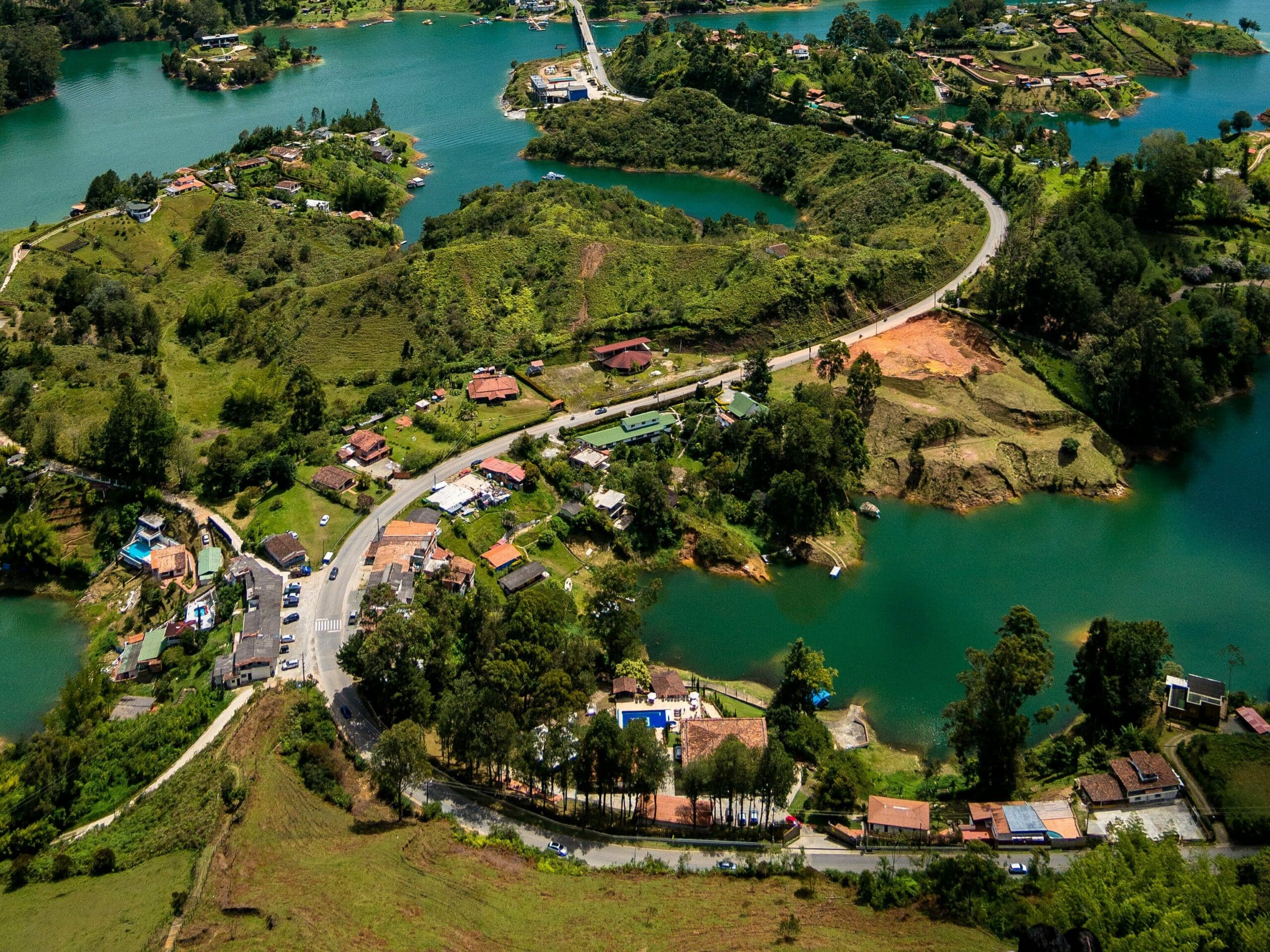
Travelling in Nicaragua and Colombia can be a great experience for tourists. The two countries offer a wide range of transport options and the scenery is breathtaking. Nicaragua and Colombia both have their own advantages and disadvantages when it comes to transport.
Nicaragua
In Nicaragua, the most popular way to travel is by ‘chicken bus’, which are old, decommissioned American school buses that can be found in most major destinations. The buses are often overcrowded, so it’s not recommended to travel with luggage. Hiring a car is also an option, but make sure you hire a car that can cope with rough terrain, as many of the roads are unpaved.
There are also domestic flights operated by La Costeña Airlines from Managua to several Nicaraguan destinations, including the Corn Islands, Bluefields and Puerto Cabezas. Boats are also available from Bluefields to the Corn Islands and from Ometepe to San Jorge and back.
Colombia

The bus is the most popular form of transport in Colombia. There is an extensive bus network linking major cities and traveling by bus is a great way to save money. Hiring a car is for sure an option, but drivers should be aware of the varying quality of roads in Colombia and be prepared to drive on unpaved roads. Air travel is another option, with an excellent domestic network connecting major cities, including those on the Caribbean coast.
Local helicopter flights are also available, and flights between the mainland and the islands of San Andrés and Providencia operate from most major Colombian cities. The Magdalena River is Colombia’s main artery, and although paddle steamers no longer travel up and down the river, cargo boats do carry passengers.
Conclusion Transportation

Overall, both Nicaragua and Colombia offer a wide range of transport options for tourists. Whether you are looking for a unique experience on a ‘chicken bus’ or a more comfortable flight on an aeroplane, both countries have something to offer. Be sure to do your research before you travel to ensure you have the best experience possible.
| Category | Nicaragua | Colombia |
| Most popular | ‘Chicken bus’ | Bus |
| Car hire | Option available, recommended for rough terrain | Option available, drivers should be prepared to drive on unpaved roads |
| Domestic flights | Operated by La Costeña Airlines from Managua to several destinations | Excellent domestic network connecting major cities |
| Boat | Available from Bluefields to the Corn Islands and from Ometepe to San Jorge and back | Flights between mainland and San Andrés and Providencia, cargo boats carry passengers on the Magdalena River |
Travel Time
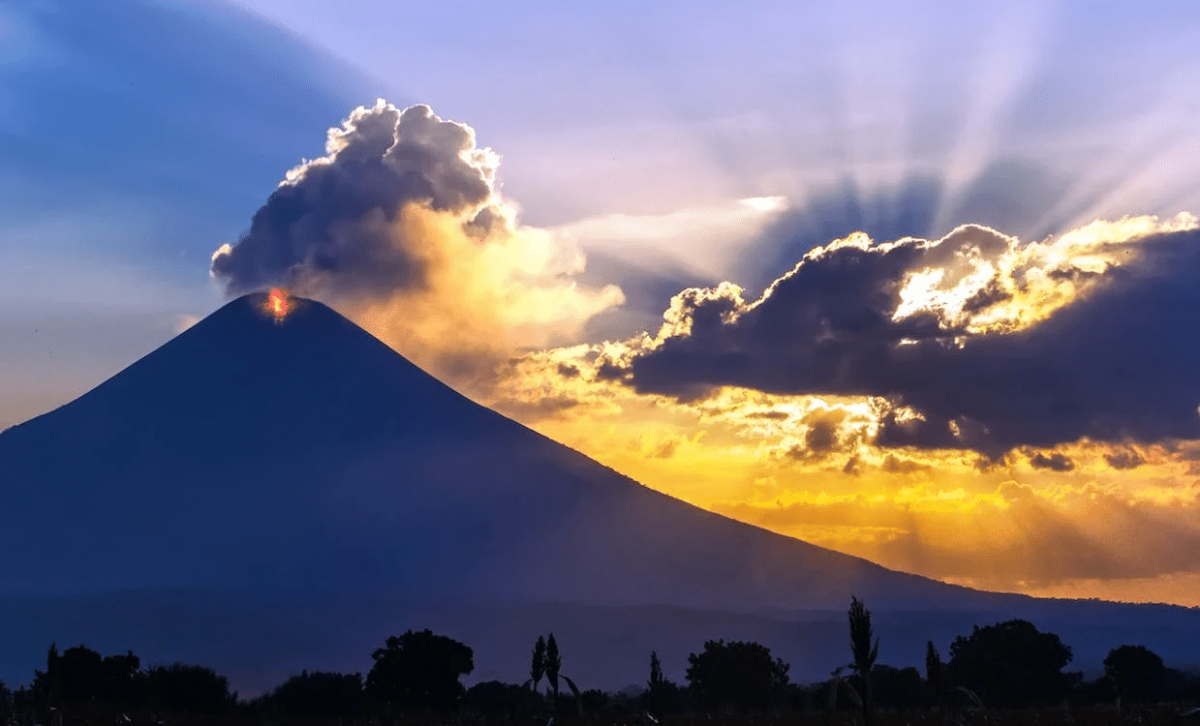
Nicaragua is generally a great place to visit during the dry season, from November to April. However, at the end of the dry season it can get very hot. During these months, temperatures can reach 93°F and there is almost no rainfall in Managua. In Nicaragua, the best time to visit is typically between November and April, which is the dry season. You can expect sunny days with temperatures ranging from 77 to 82°F on average.
On the other hand, the best time to visit Colombia is more difficult to generalise. For most regions of the country, the drier months are the best to visit, with temperatures up to 90°C and relatively little rainfall. But if you want to visit the Caribbean coast, the best months are December to April. For the Caribbean coast, such as the Cartagena region, the best season to visit is from December to April (and with some restrictions, July). These months typically have temperatures of up to 90 °F and low precipitation.
Comparison
Both countries are known for their beautiful landscapes, cities and culture, so no matter what time of year you visit, you are sure to have a great time. Nicaragua has a tropical climate with little seasonal variation in temperature, while Colombia’s temperatures range from 55.4°F (Bogotá) to 82.4°F (Cartagena).
Nicaragua is a great destination in the dry season, while Colombia is ideal for any time of year, as long as you plan ahead and know what areas you want to visit. There’s plenty to see and do in both countries, so whichever one you choose, you’re sure to have a great time.
The two countries offer sunny days with temperatures ranging from 77 to 90°F on average. In addition, both countries experience a dry season and a rainy season, so travelers should plan their trips accordingly.
Overview – Travel Time Nicaragua vs Colombia

Overall, Nicaragua and Colombia both offer great experiences for travelers, but the best time to visit each country varies throughout the year. Nicaragua’s dry season is typically from November to April, while Colombia’s dry season is typically from January to March and June to August. It is important to consider the weather and precipitation when planning a trip to either country.
| Category | Nicaragua | Colombia |
| Best time | November to April (dry season) | Differs depending on region; generally drier months (Jan – March or June – Aug), Dec to April for Caribbean coast |
| Temperature | Little seasonal variation; 77 to 82°F on average | Temperatures range from 55.4°F (Bogotá) to 90°F on average (Caribbean coast) |
| Climate | Tropical | Varied; dry and rainy seasons |
Weather and Climate

Climate in Nicaragua and Colombia are both tropical, but there are some important distinctions to consider. Nicaragua has a warm climate all year round, with temperatures ranging from 86 °F to 93 °F during the day and 68 °F to 73 °F at night.
It experiences two distinct seasons: the dry summer (verano) which is the best time to visit and the rainy winter (invierno). Nicaragua’s Caribbean coast is humid all year round, while the highlands and the Pacific coast are not affected by the rainy trade winds. The dry season begins around mid-November. It lasts until the end of April, but on the Caribbean coast only from the beginning of February to the end of April.
In Colombia, temperatures range from 75 °F to 77 °F in the south-western Pasto throughout the year. There are two rainy seasons that are common in Colombia almost throughout the country: Most rain falls between April and mid-June and in the autumn months of October and November. The dry season is in between, from mid-June to the end of September and from the beginning of December to the end of March.
Statistically speaking, the driest month in Colombia is usually July. That is also the month with the highest average hours of sunshine. Colombia is a vast country of South America and has different types of climate, although in the plains it is hot all year round. There are everywhere small variations in temperature throughout the year. The main differences are due to the altitude, which affects the temperature, and also to the distribution and the amount of rainfall.
Comparison
When comparing Nicaragua and Colombia in terms of climate, there are some similarities and differences to consider. Both countries have a tropical climate, with warm temperatures all year round.

However, there are two distinct seasons in Nicaragua: the dry summer (verano) and the wet winter (invierno), while in Colombia there are two rainy seasons that occur throughout the country. Nicaragua experiences more rainfall on the east coast, ranging from 3,000 to 4,000 millimeters (120 to 160 inches) per year, while it’s much less abundant (about 1,200/1,300 mm or 47/51 in) in the central plains. In Colombia, the driest month is usually July, which is also the month with the highest average hours of sunshine.
In addition, in Colombia the temperatures range from 75 °F to 77 °F in the south-western Pasto throughout the year, while in Nicaragua the temperatures range from 86 °F to 93 °F during the day and 68 °F to 73 °F at night.
Overview – Nicaragua vs Colombia
Nicaragua experiences two distinct seasons, the dry summer and the wet winter, while in Colombia there are two rainy seasons.
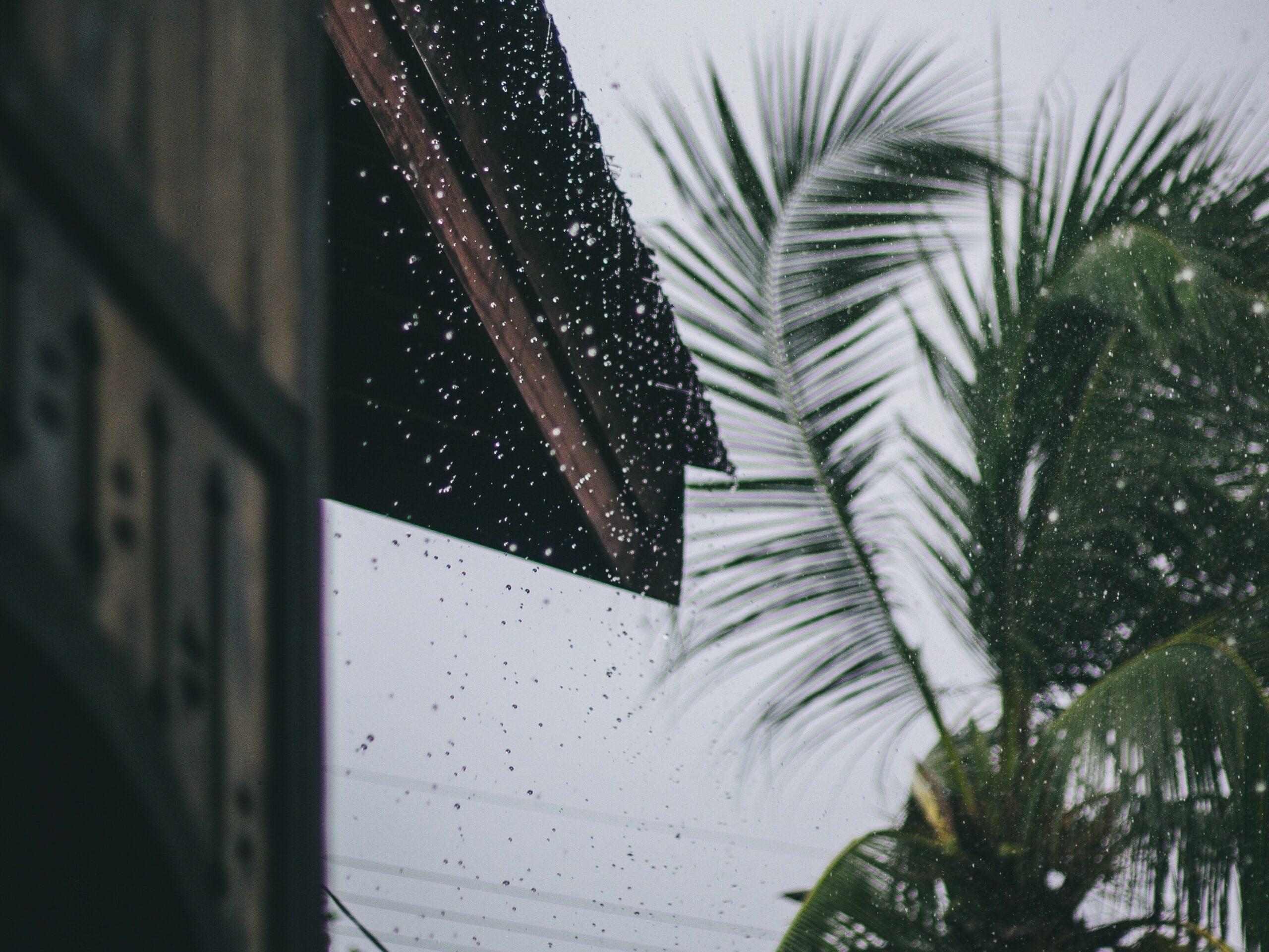
Nicaragua experiences more rainfall on the east coast, while in Colombia the driest month is usually July. In addition, temperatures vary between the two countries, with Nicaragua having temperatures ranging from 86 °F to 93 °F during the day and 68 °F to 73 °F at night, and Colombia having temperatures ranging from 75 °F to 77 °F in the south-western Pasto throughout the year.
| Category | Nicaragua | Colombia |
| Temperature | 86 °F to 93 °F during the day and 68 °F to 73 °F at night | 75 °F to 77 °F throughout the year in the south-western Pasto |
| Seasons | Two distinct seasons: dry summer (verano) and rainy winter (invierno) | Two rainy seasons: April to mid-June and October to November, with dry season in between from mid-June to end of September and from beginning of December to end of March |
| Rainfall | More rainfall on the east coast (3,000 to 4,000 mm per year), less in central plains (1,200/1,300 mm) | Driest month is usually July, with most rain falling in April to mid-June and October to November |
Accomodations
Nicaragua and Colombia are two popular tourist destinations in Central America, with each country offering a unique range of accommodation options to suit all budgets.

While Nicaragua is better known for its budget hospedajes and hostels. It is also home to some luxurious modern hotels and boutique properties, as well as a range of campsites. Colombia, on the other hand, offers a wide range of accommodation options, from hospedajes and hotels to campsites and eco-resorts.
Nicaragua
In Nicaragua, budget travelers can find hospedajes in most towns, which offer basic accommodation and usually cost roughly ~5-15$ for a double room. Hostels are also common in the more popular tourist destinations, such as León and Granada, and cost between ~5-10$ for a dormitory bed.
Hotel accommodation is also available in most towns and cities, ranging from ~US$20 and up for a night’s stay and often including amenities such as air conditioning, cable TV and services such as car rental. Camping is not widely available in Nicaragua. But there are a few spots in beach towns such as San Juan del Sur, Isla de Ometepe and the Corn Islands.
Colombia
In Colombia, the range of accommodation is much wider, from simple guesthouses to 5-star hotels. Bed and breakfast in Colombia usually takes the form of hospedajes or guesthouses, which usually offer a room and breakfast for a slightly higher price.

Camping is not widely available throughout Colombia, but there are some campsites along the Caribbean and Pacific coasts and around Lago Calima. The country also has an established hostel network throughout the country, with a chain of hostels offering good quality services and facilities.
Rural farm stays are also available and are a great option for those wishing to work on a farm in exchange for accommodation and meals. Self-catering apartments and eco-resorts are also available in Colombia, as are glamping sites and coffee farms.
Comparison Accomodations Nicaragua vs Colombia
All in all, both Nicaragua and Colombia offer a wide range of accommodation options to suit all budgets. From budget hostels and hospedajes to luxury hotels and glamping sites, each country has something unique and memorable to offer travellers. Whether you’re looking for a place to stay by the beach, in the jungle or on a farm, both Nicaragua and Colombia have something to offer.
| Category | Nicaragua | Colombia |
| Budget | Hospedajes and Hostels (US$5-15 for a double room, US$5-10 for a dormitory bed) | Hospedajes and Guesthouses (usually slightly higher priced than Nicaragua) |
| Hotel | Available in most towns and cities (US$20 and up for a night’s stay) | Wide range of options from simple guesthouses to 5-star hotels |
| Camping | Available in a few spots in beach towns such as San Juan del Sur, Isla de Ometepe and the Corn Islands | Not widely available throughout Colombia, but some campsites along the Caribbean and Pacific coasts and around Lago Calima |
| Other Options | Boutique Properties and Campsites | Eco-Resorts, Rural Farm Stays, Self-Catering Apartments, Glamping Sites and Coffee Farms |
Economy

Nicaragua has a population of 6.8 million, while Colombia has a population of 52.1 million. Nicaragua’s GDP (PPP) is $36.2 billion, while Colombia’s GDP (PPP) is $728.8 billion. rowth rate is -3.0%, while Colombia’s GDP growth rate is -6.8%. The 5-year CAGR of Nicaragua is -0.3%, while the 5-year CAGR of Colombia is 0.5%. The GDP per capita of Nicaragua is $5,575, while the GDP per capita of Colombia is $14,324.
Unemployment rate in Nicaragua is 5.8%, while the unemployment rate in Colombia is 15.4%. Nicaragua’s CPI inflation rate is 3.7%, while Colombia’s CPI inflation rate is 2.5%. Nicaragua’s FDI inflow is $182.0 million, while Colombia’s FDI inflow is $7.7 billion.
The top personal income tax rate in Nicaragua is 30 %, compared to 39 % in Colombia. Nicaragua’s top corporate income tax rate is 30%. Colombia’s top corporate tax rate has been reduced to 31%. Nicaragua’s total tax burden is 25.9% of total domestic income, while Colombia’s total tax burden is 19.7% of total domestic income.
Government spending in Nicaragua was 28.2 percent of GDP over the last three years, while government spending in Colombia was 33.7 percent of GDP over the last three years. Nicaragua’s budget deficits have averaged 2.3 per cent of GDP, while Colombia’s have averaged 4.7 per cent of GDP. Public debt represents 46.0% of GDP in Nicaragua and 62.8% of GDP in Colombia.
Population

The population of Nicaragua is expected to increase by 79,431 people in 2023, reaching 6,897,521 by the beginning of 2024. The natural increase is expected to be positive, as the number of births will exceed the number of deaths by 110,589. Colombia’s population is expected to increase by 511,266 in 2023 and to reach 52,628,104 by the beginning of 2024. The natural increase is expected to be positive, as the number of births will exceed the number of deaths by 543,579.
Summary Economy Nicaragua vs Colombia
Nicaragua’s GDP is significantly lower than Colombia’s. The unemployment rate in Nicaragua is lower than Colombia’s, while Colombia has a much lower inflation rate. Nicaragua’s tax rate is also higher than Colombia’s, while Colombia’s government spending is higher than Nicaragua’s. Nicaragua’s population growth is expected to be lower than Colombia’s.
Despite these differences, both countries have similar population growth rates and are expected to have a larger population in 2023.
| Category | Nicaragua | Colombia |
| Population | 6.8 million | 52.1 million |
| GDP (PPP) | $36.2 billion | $728.8 billion |
| GDP growth rate | -3.0% | -6.8% |
| 5-year CAGR | -0.3% | 0.5% |
| GDP per capita | $5,575 | $14,324 |
| Unemployment rate | 5.8% | 15.4% |
| CPI inflation rate | 3.7% | 2.5% |
| FDI inflow | $182.0 million | $7.7 billion |
| Top personal income tax rate | 30% | 39% |
| Top corporate tax rate | 30% | 31% |
| Total tax burden | 25.9% of total domestic income | 19.7% of total domestic income |
| Government spending | 28.2% of total output (GDP) | 33.7% of total output (GDP) |
| Budget deficits averaged | 2.3% of GDP | 4.7% of GDP |
| Public debt | 46.0% of GDP | 62.8% of GDP |
| Population growth rate | ~79,500 people (in 2023) | ~511,300 expected (2023) |
In conclusion – Nicaragua vs Colombia

In conclusion, both Nicaragua and Colombia offer visitors unique and exciting travel experiences. Nicaragua’s colonial cities, beautiful beaches and diverse landscapes make it an ideal destination for those seeking adventure and culture. Meanwhile, Colombia’s vibrant cities, stunning beaches and rich history offer travelers a taste of South American charm.
Travel times between the two countries vary, but both offer efficient transport options to get around. When it comes to food and drink, both Nicaragua and Colombia offer delicious traditional dishes and a variety of international cuisines. Accommodation is plentiful, with everything from budget hostels to luxury resorts available in both countries.
Nicaragua boasts the impressive Masaya Volcano and the beautiful island of Ometepe. While Colombia offers the colourful streets of Cartagena and the stunning Tayrona National Park. For beach lovers, Nicaragua’s San Juan del Sur and Colombia’s Caribbean coast are both excellent choices.
Economically, both countries face their own unique challenges, but offer affordable options for travellers. Both Nicaragua and Colombia are fantastic destinations with plenty to offer visitors looking for a mix of adventure, culture and relaxation.
Article: Nicaragua vs Colombia! You can find more Colombia articles here: Colombia blogs or looking for a comparison of Paraguay and Colombia!
- Sustainable Tourism in Africa: Embracing Green Industrialization - August 22, 2024
- National Parks in Montana: A Traveler’s Paradise - August 20, 2024
- Jamaica vs Mexico: The ultimate Comparison - August 17, 2024
